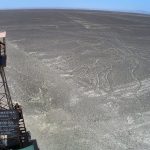Pardis and Tehran
The city of Pardis is 30 miles east of Tehran, which is the capital of Iran. Its name is Persian for, Paradise. Tehran is a huge city. It is home to close to nine million people. The city has the largest population in Iran and Western Asia. Over the years, Tehran has gone though plenty of transformations. It has also withstood a lot. It didn’t become the capital of Iran until 1907.
Environmental Issues
Unfortunately, Tehran is faced with two major environmental issues. First, the city is located on multiple fault lines, which makes the city very susceptible to earthquakes. Second, the city has dangerously high levels of pollution. It is one of the most polluted areas in the entire world. On many days, the whole city is covered in a veil of smog, which makes it difficult for residents to breathe. According to a 2006 report, air pollution causes 25 percent of the residents to lose their lives each day.
Further Issues
To make matters worse, the Alborz mountains are north of the city. When the wind blows, the pollutants aren’t blown from the area because the mountains are there. Because there is very little humidity in the city, the UV radiation reacts to the toxins in the air, increasing the ozone levels.
Relocating the Residents
The Iranian government knew that they had to do something about pollution because it was so harmful. To try to address the problem, they tried to encourage millions of residents to relocate elsewhere. To get people to agree, they started offering financial incentives. In 2010, they went as far as announcing that they would be choosing a new capital for the nation, hoping that it would cause some of the people to leave.
Sufficient Housing
The only way that the government could get residents to leave the city is if they could find sufficient housing for them in a place away from the city. In 2005, when Mahmoud Ahmadinejad became the president of Iran, he made finding a place for the people to go one of his main focuses. Using the money from Iran’s oil trade, he vowed to create a fund of more than $1 billion to help young people find employment and purchase properties.
Reza’s Compassion Fund
The fund was called the Reza’s Compassion fund, and the President had a good reason behind the idea. He figured that if he could tackle the cost of urban housing, it would result in people waiting longer to get married. This would make people have children later, helping a bit with the population problem. Even though the Iranian assembly blocked the proposal in 2006, the President pushed it though. He changed the name to the Mehr housing scheme, and the idea was to construct over two million homes in just a half-decade. When the project got underway, one of the areas chosen for the housing was Pardis.
Pardis: Wasteland In Iran
The plan to get people to move was to build housing and to add all of the amenities that the residents needed, including schools, parks, hospitals, mosques, and public transportation. By 2019, the proposal wasn’t going as planned. To encourage builders to agree to build on the land, they were given free land as long as they made the home affordable. People who wanted to buy homes were offered 99-year mortgages guaranteed by the government. Unfortunately, as inflation rose, the Mehr projects were no longer financially sound for the property developers.
Ghost Town Of Wasteland In Iran
With the project completely scrapped, this desert wasteland in Iran is filled with hundreds of eerie ghost towers. Paradis is a sad reminder of the failure of the project.
Void
Had the project gone as planned, the city would be filled with about 200,000 residents. Instead, there are residential towers that are completely empty. What makes the town look even more creepy is the fact that there are no cars, trees, parks, or any signs of life. The government claims that work is still being done on the town, but there is no evidence of any progress being made.
Phases
The city is broken down into Phases. In Phase One through Three, there are some signs of life. There is a market there and a few people. Further out in Phase 11, the buildings weren’t even started yet, leaving giant craters in the desert sand. Most of the roads in the city lead to dead ends because the streets were never completed. Tehran‘s pollution problem is worse than ever, and millions of dollars have been spent on a town that it seems as though will never be lived in. This is a horrible example of a serious political miscalculation. While the government was trying to make things better, they made things worse.


